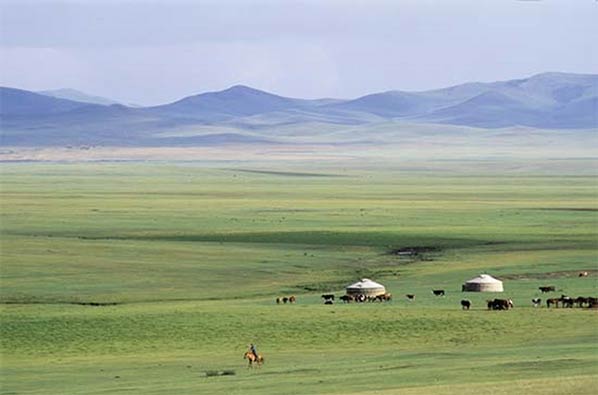The “Standard Model” of the fall raises many questions. Most important, at least for me, concerns just what it was that they fell from? If your concept of looking after the garden is limited to dead-heading the roses and keeping the ‘large mammals’ off the grass while planting out seedlings and cuddling rabbits then maybe the fall is a welcome opportunity to expand your horizons! Coupled with this there is the issue of how God is portrayed. If you think he is capricious and easily angered then you have no issue with what happened. If, however, you think that the revelation of God through Christ as love is a ‘sure foundation’ then either you enter into wrestling-mode with the narrative or you just park the issues.

Wise up
There are a few key points to bring out regarding the issues of Adam and Eve’s identity in order to deal with the above. Before we do though, it is worth considering that the creation and fall accounts can be considered as part of the wisdom literature of the Hebrew Bible. This means they sit alongside books like Proverbs, Song of Songs and Psalms. Wisdom Literature need to be chewed. It offers great payback but doesn’t give up its treasure without a struggle.
We have seen that Adam and Eve were created in such a way as to carry something of their creator’s divinity within them. They were the image of God, and therefore the idol of God. The purpose of making humanity as the extension of deity is found in the blessing to create a race which carries the same image and likeness as its parents. This race is/was to subdue and rule over the creation. [1]
It all goes back to a Temple
There are many points within the creation narratives that suggest that Eden was a created as the first temple on earth. (This might be worth another post or two in the future- and is referred to as the Proto-temple – great name!) Suffice to say that the temple was the place where Yahweh lived and met intimately with his people. The temple had great significance to the Jewish authors and their readers would not have missed the references to it in the text. There is clearly a lot of power wrapped up in the concept of “Sacred space” which mostly zooms over the head of moderns like us, especially evangelicals and protestants (like me).
Clearly Eden itself was not in need of very much subjugation or domination, being a garden, and a freshly planted one at that. But what was outside the garden?

5 When no bush of the field was yet in the land and no small plant of the field had yet sprung up … for … there was no man to work the ground … 7 then the Lord God formed the man of dust from the ground and breathed into his nostrils the breath of life, and the man became a living creature. 8 And the Lord God planted a garden in Eden, in the east, and there he put the man whom he had formed. Gen 2:5-8
The word translated field is ‘sadeh’ and can be translated as ‘plain’ as opposed to ‘mountain.’ [2] We can think of this as being like a ‘steppe’ – a wide, mostly flat area. In this flat area was no ‘bush’ or ‘small plant’. God then forms the man, in the steppe, plants a garden and puts the man in said garden.
We have a contrast here. On the one hand is the garden into which Adam was put. Outside that place of ordered, paradisaical beauty was a chaotic environment with ‘no bushes or small plants, and no beasts of the field (see 2:19). This later was included in Yahweh’s commission to his newly created image/ idols, namely they were to exercise their dominion and rule over this unordered, chaotic place as well as the garden. Remember, we have to get into the authors’ mind – this chaotic place was dangerous and desert like to them. It was a place of threat, where danger lurked. We tend to think of deserts as peaceful places, though still somewhat dangerous. Perhaps we have a more romantic opinion of them compared to the Hebrews?
In his seminal book on the temple and the church Beale says that the intention seems to be that Adam was to widen the boundaries of the Garden in ever increasing circles by extending the order of the garden sanctuary into the inhospitable outer spaces. The outward expansion would include the goal of spreading the glorious presence of God. This would occur by Adam and Eve’s children reflecting God’s image and the light of his presence, as they continued to obey the mandate given to their parents and going out to subdue the outer county. [3]
Lots to chew here. Adam and Eve were to expand the garden to make the inhospitable places hospitable. Or to put it another way, they were to extend the temple out from the original Edenic boundary until it filled the whole earth. Reflect on this for a moment. This was a significant role, that would require a huge skill set and great wisdom. It is a job fit for a royal race, populated by kings and queens growing into what they were meant to be. This sheds light on why the Genesis 2 account seems to stress precious materials, and talks about 4 rivers – resources for the temple, and hint as to the role of the temple. The implications of this task are enormous.
I think it is clear to say that the purpose of the human race in its pre-fall condition was a bit more than just dead-heading roses and mowing the grass. The role would have bought great glory and great joy.
In the next post I discuss some popular ideas on what the fall wasn’t and hopefully dismiss them!
References
- S. Herring, ‘Transubstantiated Humanity’. 2008, 491
- Study Light website, accessed 29/07/2019, http://classic.studylight.org/lex/heb/view.cgi?number=07704
- G.K. Beale, The Temple and the Church’s Mission,



